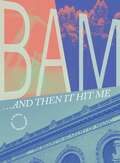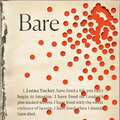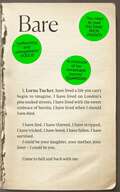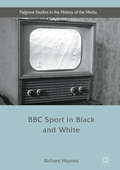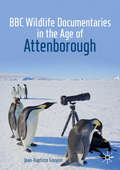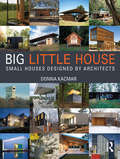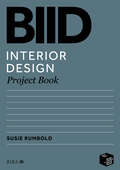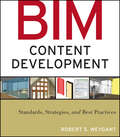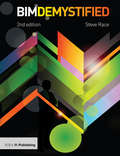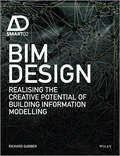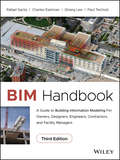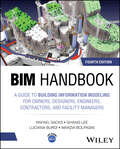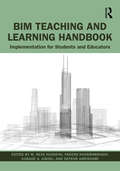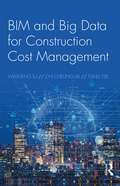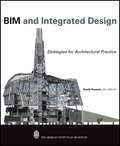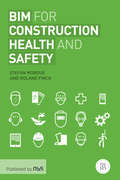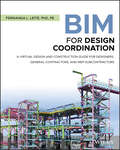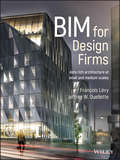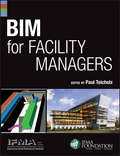- Table View
- List View
BAM... and Then It Hit Me
by Karen Brooks HopkinsPresident Emerita of the Brooklyn Academy of Music (BAM) Karen Brooks Hopkins pens BAM…and Then It Hit Me, an inspiring memoir of her 36 years at the iconic cultural institution, America's oldest performing arts center. The book has a sharp focus on concepts such as leadership, innovation, urban revitalization (including the transformation of Brooklyn from Manhattan Outpost to the coolest neighborhood on the planet), as highly successful cultural fundraising played critical roles in the colorful evolution of this world-class cultural juggernaut in the performing arts.
BARE: 'You have to read this book' MICK JAGGER
by Lorna TuckerThe inspirational true story of one woman's fight to survive on the streets of LondonI, Lorna Tucker, have lived a life that most you can't even begin to imagine...'You need to read this book' MICK JAGGER'Unflinching and unforgettable' VOGUE 'An essential read showcasing the resilience of the human spirit' JUANO DIAZI have lived in London's piss-soaked streets, I have lived with the sweet embrace of heroin, I have lived when I should have died.I have lied, I have thieved, I have stripped, I have tricked, I have loved, I have fallen, I have survived. I could be your daughter, your mother, your lover - I could be you.Come to hell and back with me.AN EYE-OPENING, PERSONAL ACCOUNT OF FEMALE HOMELESSNESS, FROM ONE OF BRITAIN'S MOST EXCITING FILM-MAKERS
BARE: 'You have to read this book' MICK JAGGER
by Lorna TuckerThe inspirational true story of one woman's fight to survive on the streets of LondonI, Lorna Tucker, have lived a life that most you can't even begin to imagine...'You need to read this book' MICK JAGGER'Unflinching and unforgettable' VOGUE 'An essential read showcasing the resilience of the human spirit' JUANO DIAZI have lived in London's piss-soaked streets, I have lived with the sweet embrace of heroin, I have lived when I should have died.I have lied, I have thieved, I have stripped, I have tricked, I have loved, I have fallen, I have survived. I could be your daughter, your mother, your lover - I could be you.Come to hell and back with me.AN EYE-OPENING, PERSONAL ACCOUNT OF FEMALE HOMELESSNESS, FROM ONE OF BRITAIN'S MOST EXCITING FILM-MAKERS
BARE: 'You have to read this book' MICK JAGGER
by Lorna TuckerThe inspirational true story of one woman's fight to survive on the streets of LondonI, Lorna Tucker, have lived a life that most you can't even begin to imagine...'You need to read this book' MICK JAGGER'Unflinching and unforgettable' VOGUE 'An essential read showcasing the resilience of the human spirit' JUANO DIAZI have lived in London's piss-soaked streets, I have lived with the sweet embrace of heroin, I have lived when I should have died.I have lied, I have thieved, I have stripped, I have tricked, I have loved, I have fallen, I have survived. I could be your daughter, your mother, your lover - I could be you.Come to hell and back with me.AN EYE-OPENING, PERSONAL ACCOUNT OF FEMALE HOMELESSNESS, FROM ONE OF BRITAIN'S MOST EXCITING FILM-MAKERS
BBC Sport in Black and White (Palgrave Studies in the History of the Media)
by Richard HaynesThis book provides the first detailed account of the formative decades of BBC televised sport when it launched its flagship programmes Sportsview, Grandstand and Match of the Day. Based on extensive archival research in the BBC's written archives and interviews with leading producers, editors and commentators of the period, it provides a 'behind-the-scenes' narrative history of this major institution of British cultural life. In 2016 the BBC celebrated the fiftieth anniversary of its television coverage of England's World Cup victory. Their coverage produced one of the most oft-played moments in the history of television, Kenneth Wolstenholme's famous line: 'Some people are on the pitch, they think it's all over . . . it is now!' as Geoff Hurst scored England's fourth goal, securing England's 4-2 victory. It was a landmark in English football as well as a watershed in the BBC's highly professionalised approach to televised sport. How the BBC reached this peak of television expertise, and who was behind their success in developing the techniques of televised sport, is the focus of this book.
BBC Wildlife Documentaries in the Age of Attenborough (Palgrave Studies in Science and Popular Culture)
by Jean-Baptiste GouyonThis book explores the history of wildlife television in post-war Britain. It revolves around the role of David Attenborough, whose career as a broadcaster and natural history filmmaker has shaped British wildlife television. The book discusses aspects of Attenborough’s professional biography and also explores elements of the institutional history of the BBC—from the early 1960s, when it was at its most powerful, to the 2000s, when its future is uncertain. It focuses primarily on the wildlife ‘making-of’ documentary genre, which is used to trace how television progressively became a participant in the production of knowledge about nature. With the inclusion of analysis of television programmes, first-hand accounts, BBC archival material and, most notably, interviews with David Attenborough, this volume follows the development of the professional culture of wildlife broadcasting as it has been portrayed in public. It will be of interest to wildlife television amateurs, historians of British television and students in science communication.
BIG little house: Small Houses Designed by Architects
by Donna KacmarWhat are the challenges architects face when designing dwelling spaces of a limited size? And what can these projects tell us about architecture – and architectural principles – in general? In BIG little house, award-winning architect Donna Kacmar introduces twenty real-life examples of small houses. Each project is under 1,000 square feet (100 square meters) in size and, brought together, the designs reveal an attitude towards materiality, light, enclosure and accommodation which is unique to minimal dwellings. While part of a trend to address growing concerns about minimising consumption and lack of affordable housing, the book demonstrates that small dwellings are not always simply the result of budget constraints but constitute a deliberate design strategy in their own right. Highly illustrated and in full-colour throughout, each example is based on interviews with the original architect and accompanied by detailed floor plans. This ground-breaking, beautifully designed text offers practical guidance to any professional architect or homeowner interested in small scale projects.
BIID Interior Design Project Book
by Susie RumboldThe touchstone guide to running projects from the British Institute of Interior Design (BIID). By setting out actions step-by-step, this essential handbook identifies the key obligations of the interior designer at each project stage. Straightforward explanation is supplemented by invaluable checklists and templates. Featuring crucial advice on administering construction contracts, it references the new RIBA/BIID Domestic Professional Services Contract 2020 for interior design services. Reflecting the RIBA Plan of Work 2020 and contemporary working practice, it provides a systematic operational framework that can be applied to all types of projects. Comprehensive in scope with a logical structure, it embraces the theme of collaboration within the project team. It also addresses post-occupancy evaluation, modern methods of construction and sustainability. Suitable for projects within any industry sector and practice type, from large international firms to sole practitioners, it is accessible to designers with different levels of experience.
BIM Content Development
by Robert S. WeygantA must-have reference to create content-rich BIM objects and models A cutting-edge technology, Building Information Modeling (BIM) software allows AEC professionals to produce data-intensive 3D building models that far exceed those rendered with the 2D limitations of CAD, today's industry standard. Unlike CAD, however, no consensus has been reached among AEC industries for agreed upon guidelines directing BIM models. To fill this void, this book explores the different approaches used in designing a BIM model and incorporates them into one cohesive strategy that serves as a digital road map going forward. BIM Content Development: Details the various types of information (graphic and data) that Building Information Modeling (BIM) can gather about a building, such as its dimensions and material, its performance, its functionality, its interaction with other structures, and how often it must be maintained Presents a vendor-neutral approach to thinking about, organizing, and managing data used to create a 3D building model Covers the different methods for organizing content, such as CSI's MasterFormat®, Uniformat, OmniClass, and Industry Foundation Classes (IFC) Providing the means and methods for effective content creation, BIM Content Development offers sound guidance for graphic standards and data management solutions to maximize the ability of professionals to operate on any BIM software platform-and shows how to strengthen the decision-making process to unleash powerful tools for modeling a building's informational profile.
BIM Demystified
by Steve RaceBIM Demystified is a short, practical introduction to Building Information Modelling (BIM). Addressing BIM from the point of view of mainstream practice as opposed to a cutting-edge technological perspective, it offers a user-friendly yet thorough explanation of a subject which is often swamped by jargon and deluged with spin. Taking a wide view of BIM – encompassing business opportunity, Code of Conduct, cultural issues and the necessity for better legal arrangements too – the book’s chapters range from the BIM ingredients (including objects, parametrics, and standards), to the business case for BIM and how to implement it. BIM requires a shift in attitudes if its benefits are to be obtained – and this book will allow individuals at all levels in any practice to build a firmer understanding of the merits and wider application of the subject. It brings together both managers and technologists within businesses throughout the AECC chain to form better and more valuable propositions for built environment interventions.
BIM Design: Realising the Creative Potential of Building Information Modelling (AD Smart)
by Richard GarberBuilding information modelling (BIM) is revolutionising building design and construction. For architects, BIM has the potential to optimise their creativity while reducing risk in the design and construction process, thus giving them a more significant role in the building process. This book demonstrates how innovative firms are using BIM technologies to move design away from the utilitarian problems of construction, engaging them in a stunning new future in the built environment. Whereas recent books about BIM have tended to favour case-study analyses or instruction on the use of specific software, BIM Design highlights how day-to-day design operations are shaped by the increasingly generative and collaborative aspects of these new tools. BIM strategies are described as operations that can enhance design rather than simply make it more efficient. Thus this book focuses on the specific creative uses of information modelling at the operational level, including the creative development of parametric geometries and generative design, the evaluation of environmental performance and the simulation and scheduling of construction/fabrication operations. This book also engages BIM’s pragmatic efficiencies such as the conflict checking of building systems and the creation of bills of quantities for costing; and in so doing it demonstrates how BIM can make such activities collaborative. Throughout, projects are used to illustrate the creative application of BIM at a variety of scales. These buildings showcase work by fi rms executing projects all over the world: SHoP Architects and Construction (New York), Morphosis (Los Angeles), Populous (London), GRO Architects (New York), Reiser + Umemoto (New York), Gensler (Shanghai) and UNStudio (Amsterdam).
BIM Handbook
by Paul Teicholz Rafael Sacks Chuck Eastman Kathleen Liston"The BIM Handbook is an extensively researched and meticulously written book, showing evidence of years of work rather than something that has been quickly put together in the course of a few months. It brings together most of the current information about BIM, its history, as well as its potential future in one convenient place, and can serve as a handy reference book on BIM for anyone who is involved in the design, construction, and operation of buildings and needs to know about the technologies that support it. The need for such a book is indisputable, and it is terrific that Chuck Eastman and his team were able to step up to the plate and make it happen. Thanks to their efforts, anyone in the AEC industry looking for a deeper understanding of BIM now knows exactly where to look for it."--AECbytes book review, August 28, 2008 (www.aecbytes.com/review/2008/BIMHandbook.html)Discover BIM: A better way to build better buildingsBuilding Information Modeling (BIM) offers a novel approach to design, construction, and facility management in which a digital representation of the building process is used to facilitate the exchange and interoperability of information in digital format. BIM is beginning to change the way buildings look, the way they function, and the ways in which they are designed and built.The BIM Handbook, Second Edition provides an in-depth understanding of BIM technologies, the business and organizational issues associated with its implementation, and the profound advantages that effective use of BIM can provide to all members of a project team. Updates to this edition include:Completely updated material covering the current practice and technology in this fast-moving fieldExpanded coverage of lean construction and its use of BIM, with special focus on Integrated Project Delivery throughout the bookNew insight on the ways BIM facilitates sustainable buildingNew information on interoperability schemas and collaboration toolsSix new case studiesPainting a colorful and thorough picture of the state of the art in building information modeling, the BIM Handbook, Second Edition guides readers to successful implementations, helping them to avoid needless frustration and costs and take full advantage of this paradigm-shifting approach to construct better buildings that consume fewer materials and require less time, labor, and capital resources.
BIM Handbook: A Guide to Building Information Modeling for Owners, Designers, Engineers, Contractors, and Facility Managers
by Paul Teicholz Rafael Sacks Chuck Eastman Ghang LeeDiscover BIM: A better way to build better buildings Building Information Modeling (BIM) offers a novel approach to design, construction, and facility management in which a digital representation of the building product and process is used to facilitate the exchange and interoperability of information in digital format. BIM is beginning to change the way buildings look, the way they function, and the ways in which they are designed and built. The BIM Handbook, Third Edition provides an in-depth understanding of BIM technologies, the business and organizational issues associated with its implementation, and the profound advantages that effective use of BIM can provide to all members of a project team. Updates to this edition include: Information on the ways in which professionals should use BIM to gain maximum value New topics such as collaborative working, national and major construction clients, BIM standards and guides A discussion on how various professional roles have expanded through the widespread use and the new avenues of BIM practices and services A wealth of new case studies that clearly illustrate exactly how BIM is applied in a wide variety of conditions Painting a colorful and thorough picture of the state of the art in building information modeling, the BIM Handbook, Third Edition guides readers to successful implementations, helping them to avoid needless frustration and costs and take full advantage of this paradigm-shifting approach to construct better buildings that consume fewer materials and require less time, labor, and capital resources.
BIM Handbook: A Guide to Building Information Modeling for Owners, Designers, Engineers, Contractors, and Facility Managers
by Rafael Sacks Ghang Lee Marzia Bolpagni Luciana BurdiUnderstand the latest advances in BIM with this fully updated guide Building Information Modeling (BIM) has become an increasingly central component of architecture and the building trades. Modern BIM software has moved beyond the simple 2D and 3D modeling tools of the past to incorporate simulation, analysis, project management, and more. BIM Handbook: A Guide to Building Information Modeling for Owners, Designers, Engineers, Contractors, and Facility Managers has long served as the essential introduction to this subject and its ever-expanding applications. Now fully updated to reflect the increasing standardization of BIM practices and its cutting-edge industry frameworks, the latest edition of this key text remains the fundamental tool for understanding the backbone of innovation in construction technology. Readers of the fourth edition of BIM Handbook will also find: Expanded treatment of the owner’s perspective in BIM and BIM integration Detailed discussion of new industry-specific frameworks such as ISO 19650 Exploration of the relationship between BIM and digital twins for construction, operations, and maintenance BIM Handbook is ideal for any professionals in the building trades, including owners and operators of buildings, architects, engineers, contractors, fabricators, developers of BIM software, and more.
BIM Teaching and Learning Handbook: Implementation for Students and Educators
by M. Reza Hosseini Farzad Khosrowshahi Ajibade Aibinu Sepehr AbrishamiThis book is the essential guide to the pedagogical and industry-inspired considerations that must shape how BIM is taught and learned. It will help academics and professional educators to develop programmes that meet the competences required by professional bodies and prepare both graduates and existing practitioners to advance the industry towards higher efficiency and quality. To date, systematic efforts to integrate pedagogical considerations into the way BIM is learned and taught remain non-existent. This book lays the foundation for forming a benchmark around which such an effort is made. It offers principles, best practices, and expected outcomes necessary to BIM curriculum and teaching development for construction-related programs across universities and professional training programmes. The aim of the book is to: Highlight BIM skill requirements, threshold concepts, and dimensions for practice; Showcase and introduce tried-and-tested practices and lessons learned in developing BIM-related curricula from leading educators; Recognise and introduce the baseline requirements for BIM education from a pedagogical perspective; Explore the challenges, as well as remedial solutions, pertaining to BIM education at tertiary education; Form a comprehensive point of reference, covering the essential concepts of BIM, for students; Promote and integrate pedagogical consideration into BIM education. This book is essential reading for anyone involved in BIM education, digital construction, architecture, and engineering, and for professionals looking for guidance on what the industry expects when it comes to BIM competency.
BIM and Big Data for Construction Cost Management
by Weisheng Lu Chi Cheung Lai Tung TseThis book is designed to help practitioners and students in a wide range of construction project management professions to understand what building information modelling (BIM) and big data could mean for them and how they should prepare to work successfully on BIM-compliant projects and maintain their competencies in this essential and expanding area. In this book, the state-of-the-art information technologies that support high-profile BIM implementation are introduced, and case studies show how BIM has integrated core quantity surveying and cost management responsibilities and how big data can enable informed decision-making for cost control and cost planning. The authors' combined professional and academic experience demonstrates, with practical examples, the importance of using BIM and particularly the fusion of BIM and big data, to sharpen competitiveness in global and domestic markets. This book is a highly valuable guide for people in a wide range of construction project management and quantity surveying roles. In addition, implications for project management, facilities management, contract administration, and dispute resolution are also explored through the case studies, making this book essential reading for built environment and engineering professionals.
BIM and Integrated Design
by Randy Deutsch"Ready or not, it's high time to make BIM a part of your practice, or at least your vocabulary, and this book has as much to offer beginners as it does seasoned users of building information modeling software."--Chicago ArchitectThe first book devoted to the subject of how BIM affects individuals and organizations working within the ever-changing construction industry, BIM and Integrated Design discusses the implementation of building information modeling software as a cultural process with a focus on the technology's impact and transformative effect--both potentially disruptive and liberating--on the social, psychological, and practical aspects of the workplace.BIM and Integrated Design answers the questions that BIM poses to the firm that adopts it. Through thorough research and a series of case study interviews with industry leaders--and leaders in the making out from behind the monitor--BIM and Integrated Design helps you learn:Effective learning strategies for fully understanding BIM software and its useKey points about integrated design to help you promote the process to owners and your teamHow BIM changes not only the technology, process, and delivery but also the leadership playing fieldHow to become a more effective leader no matter where you find yourself in the organization or on the project teamHow the introduction of BIM into the workforce has significant education, recruitment, and training implicationsCovering all of the human issues brought about or exacerbated by the advent of BIM into the architecture workplace, profession, and industry, BIM and Integrated Design shows how to overcome real and perceived barriers to its use.
BIM for Construction Health and Safety
by Stefan Mordue Roland FinchWhat is BIM and how does it affect the health and safety professional? How are BIM technologies used on a practical level? What opportunities are there for the use of BIM in the health and safety arena? This concise and practical guide aims to answer all these questions and more. The health and safety role is evolving towards collaboration, structured data and sharing of information as BIM – the incarnation of these sensibilities - increasingly underpins construction practice. As the industry begins to see how these two topics can and should intersect this guide provides context and practical advice by explaining the basic principles of BIM, how it will shape the health and safety professional’s role and what tools and processes will need to be embedded in the future. It also highlights the wealth of opportunities that BIM provides to improve health and safety standards and effective coordination – the means to exploit the potential of BIM.
BIM for Design Coordination: A Virtual Design and Construction Guide for Designers, General Contractors, and MEP Subcontractors
by Fernanda L. LeiteA tactical guide to successful Virtual Design and Construction project coordination, featuring case studies from leading VDC firms. Virtual Design Coordination (VDC) employs information-rich Building Information Modeling (BIM) to enable specialty designers and contractors to create a single, coordinated set of designs that can prevent cost overruns, avoid schedule delays, and identify issues in the field. Although BIM-based design coordination is widely used in the commercial construction industry, there remains a need for a standardized practice. BIM for Design Coordination formalizes industry best practices and provides structured guidelines to the process. Helping readers gain the benefits of BIM-based design coordination, this practical guide covers areas such as setting up a project for success, model quality impacts on design coordination, carrying out a successful VDC session, and more. Specific guidelines for various project stakeholders are laid out in detail, while real-world examples of project design coordination workflows and templates for BIM Project Execution Plans (PxPs) are provided throughout the text. Written by a leading expert and educator in the field, this book: Provides a formal set of BIM-based design coordination guidelines that emphasize construction-stage coordination Features real-life case studies that illustrate how leading firms approach design coordination Covers BIM-based design coordination in other industries, such as infrastructure and industrial sectors Presents guidelines for all project stakeholders, including subcontractors, architects, engineers, fabricators, and owners Includes chapters on teaching BIM-based design coordination and the future of the field BIM for Design Coordination: A Virtual Design and Construction Guide for Designers, General Contractors, and MEP Subcontractors is a much-needed resource for general contractors and members of VDC teams, as well as academics, students, and professionals new to BIM-based design coordination.
BIM for Design Firms: Data Rich Architecture at Small and Medium Scales
by François Lévy Jeffrey W. OuellettePaves the path for the adoption and effective implementation of BIM by design firms, emphasizing the design opportunities that this workflow affords This book expands on BIM (Building Information Modeling), showing its applicability to a range of design-oriented projects. It emphasizes the full impact that a data modeling tool has on design processes, systems, and the high level of collaboration required across the design team. It also explains the quantitative analysis opportunities that BIM affords for sustainable design and for balancing competing design agendas, while highlighting the benefits BIM offers to designing in 3D for construction. The book concludes with a deep look at the possible future of BIM and digitally-enhanced design. Through clear explanation of the processes involved and compelling case studies of design-oriented projects presented with full-color illustrations, BIM for Design Firms: Data Rich Architecture at Small and Medium Scales proves that the power of BIM is far more than an improved documentation and sharing environment. It offers chapters that discuss a broad range of digital design, including problems with BIM, how readers can leverage BIM workflows for complex projects, the way BIM is taught, and more. Helps architects in small and medium design studios realize the cost and efficiency benefits of using BIM Demonstrates how the use of BIM is as relevant and beneficial for a range of projects, from small buildings to large and complex commercial developments Highlights the quantitative analysis opportunities of data-rich BIM models across design disciplines for climate responsiveness, design exploration, visualization, documentation, and error detection Includes full-color case studies of small to medium projects, so that examples are applicable to a range of practice types Features projects by Arca Architects, ARX Protugal Arquitectos, Bearth & Deplazes, Durbach Block Jaggers, Flansburgh Architects, and LEVER Architecture BIM for Design Firms is an excellent book for architects in small and medium-sized studios (including design departments within large firms) as well as for architecture students.
BIM for Facility Managers: A Guide To Building Information Modeling For Owners, Designers, Engineers, Contractors, And Facility Managers
by IFMAA practical look at extending the value of Building Information Modeling (BIM) into facility management—from the world's largest international association for professional facility managers Building owners and facility managers are discovering that Building Information Modeling (BIM) models of buildings are deep reservoirs of information that can provide valuable spatial and mechanical details on every aspect of a property. When used appropriately, this data can improve performance and save time, effort, and money in running and maintaining the building during its life cycle. It can also provide information for future modifications. For instance, a BIM could reveal everything from the manufacturer of a light fixture to its energy usage to maintenance instructions. BIM for Facility Managers explains how BIM can be linked to facility management (FM) systems to achieve very significant life-cycle advantages. It presents guidelines for using BIM in FM that have been developed by public and private owners such as the GSA. There is an extensive discussion of the legal and contractual issues involved in BIM/FM integration. It describes how COBie can be used to name, capture, and communicate FM-related data to downstream systems. There is also extensive discussion of commercial software tools that can be used to facilitate this integration. This book features six in-depth case studies that illustrate how BIM has been successfully integrated with facility management in real-life projects at: Texas A&M Health Science Center USC School of Cinematic Arts MathWork's new campus Xavier University State of Wisconsin Facilities University of Chicago Library renovation BIM for Facility Managers is an indispensable resource for facility managers, building owners, and developers alike.
BIM for Landscape
by Landscape InstituteBIM (Building Information Modelling) is transforming working practices across the built environment sector, as clients, professionals, contractors and manufacturers throughout the supply chain grasp the opportunities that BIM presents. The first book ever to focus on the implementation of BIM processes in landscape and external works, BIM for Landscape will help landscape professionals understand what BIM means for them. This book is intended to equip landscape practitioners and practices to meet the challenges and reap the rewards of working in a BIM environment - and to help professionals in related fields to understand how BIM processes can be brought into landscape projects. BIM offers significant benefits to the landscape profession, and heralds a new chapter in inter-disciplinary relationships. BIM for Landscape shows how BIM can enhance collaboration with other professionals and clients, streamline information processes, improve decision-making and deliver well-designed landscape projects that are right first time, on schedule and on budget. This book looks at the organisational, technological and professional practice implications of BIM adoption. It discusses in detail the standards, structures and information processes that form BIM Level 2-compliant workflows, highlighting the role of the landscape professional within the new ways of working that BIM entails. It also looks in depth at the digital tools used in BIM projects, emphasising the ‘information’ in Building Information Modelling, and the possibilities that data-rich models offer in landscape design, maintenance and management. BIM for Landscape will be an essential companion to the landscape professional at any stage of their BIM journey.
BIM: In Small-Scale Sustainable Design
by François Lévy"Any architect doing small or medium scaled projects who is also vested in sustainable design but is not yet doing BIM will enjoy this book's overall focus. "-Architosh. com This work is the leading guide to architectural design within a building information modeling (BIM) workflow, giving the practitioner a clear procedure when designing climate-load dominated buildings. The book incorporates new information related to BIM, integrated practice, and sustainable design, as well information on how designers can incorporate the latest technological tools. Each chapter addresses specific topics, such as natural ventilation for cooling, passive solar heating, rainwater harvesting and building hydrology, optimizing material use and reducing construction waste, and collaborating with consultants or other building professionals such as engineers and energy modelers.
BLADE's Best Custom Knives
by Blade EditorsThis collection of articles marks the 40th anniversary of BLADE. Part one covers the years 1973-1988; part two, 1989-2000; and part three, 2001-2012.
BLADE's Best Factory Knives
by Blade EditorsThey may have been your father's knives or your grandfather's knives - they may even be your knives. To help celebrate its 40th anniversary, BLADE released a three-part series recognizing the top 40 factory knives over that span (1973-2013). The first chapter pinpoints the top factory knives from 1973-1988. The second chapter includes 1989-2000, and the third chapter covers 2001-2012.
